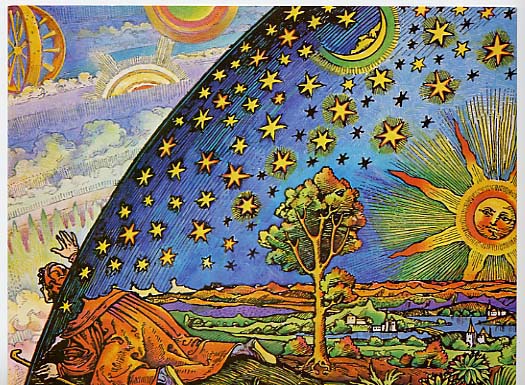Another mural exists in Marion Square and, by the evidence of the note at the bottom of the wall, it has long history too: ‘Liquid Lunch Production 93‘.
It adorns one of the walls of the Theosophical Society (previous blog, January 26) – a miniature Greek temple built in 1918. The mural has a cosmic aspect – constellations of stars, tendrils of flowers, arcane and esoteric symbols, and a knowledge-seeker with six arms and a dramatic flaming headpiece. At the top of the mural there is a legend: ‘Questions Answered, Answers Questioned‘.

On the entrance to the hall, the building has clues for its esoteric function.
On the pediment, below the apex of the roof, there is a ring-shaped form.
From the top: the Om – the sacred sound, a spiritual icon and mantra in Hinduism, Buddhism and Jainism.
Next, there a whirling cross within a circle. It is a very ancient symbol, found all over the world—in India, among American Indians, and in many other cultures around the globe. In Sanskrit it is called a swastika, meaning ‘good’.
The main circle is in fact the ouroboros, a serpent eating it own tail. While first emerging in Ancient Egypt and India the ouroboros has been important in religious and mythological symbolism.
In the interior of the circle is the the Star of David – is the symbol most commonly associated with Judaism today, but it is actually a relatively new Jewish symbol.
At the centre, the Ankh – the ancient Egyptian hieroglyphic character that means ‘eternal life’.
[You can see the meaning of the symbols for the Seal from the website of the International Theosophical Society.]
Surrounding the graphic are the words: ‘There Is No Religion Higher Than Truth‘.
According Wikipedia:
Theosophy refers to systems of esoteric philosophy concerning, or seeking direct knowledge of, presumed mysteries of being and nature, particularly concerning the nature of divinity. In fact, the word is derived from the Greek word θεοσοφία theosophia, which comes from the combination of words θεός theos, God + σοφία sophia, wisdom; literally ‘God’s wisdom’. Theosophy is considered a part of the broader field of esotericism, referring to hidden knowledge or wisdom that offers the individual enlightenment and salvation. (Wikipedia: Theosophy)
The New Zealand Theosophical Society has its own website too – a very modern nomenclature: http://theosophy.nz
It makes for some fascinating reading….





